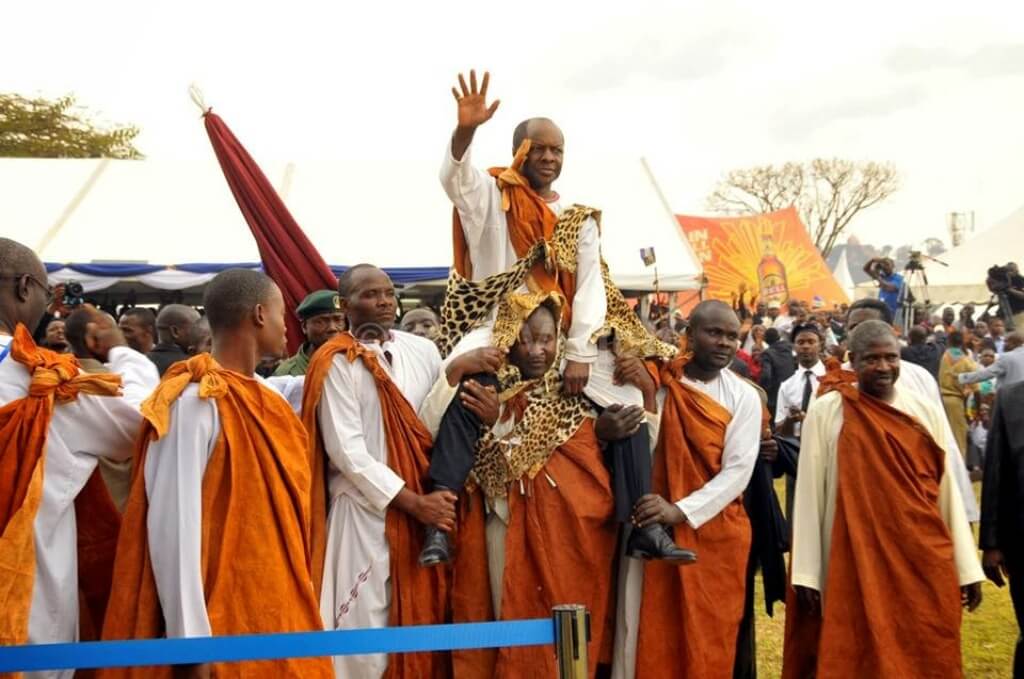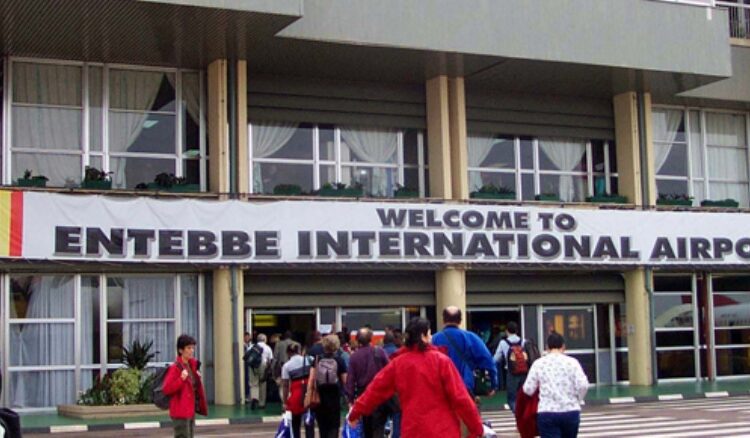
Traditional Dances and Festivals in Uganda | Experiya Tour Company
October 29, 2025
Languages Spoken in Uganda | Experiya Tour Company
October 29, 2025What Are the Main Tribes in Uganda?
Uganda, often called the Pearl of Africa, is a country of remarkable diversity — not only in its landscapes and wildlife but also in its people. With over 50 ethnic groups spread across its regions, Uganda is a living mosaic of languages, customs, traditions, and histories. Each tribe contributes a unique thread to the nation’s cultural fabric, creating a rich tapestry of unity in diversity. From the royal Buganda Kingdom in the heart of the country to the cattle-keeping Bahima of the west and the proud Acholi of the north, Uganda’s tribes tell the story of a nation where culture and identity are deeply intertwined.
Understanding Uganda’s main tribes offers travelers an incredible opportunity to appreciate the country beyond its scenic wonders. Meeting the people, learning their traditions, and hearing their stories brings the destination to life. Let’s journey through the main tribes of Uganda and explore what makes each one distinct, vibrant, and integral to the nation’s identity.
The Baganda – Guardians of the Buganda Kingdom
The Baganda are the largest ethnic group in Uganda, making up about 17% of the country’s population. They inhabit the central region, which includes Kampala, Uganda’s capital city, and the surrounding districts. The Baganda form the foundation of the Buganda Kingdom, one of the most influential traditional monarchies in East Africa.
Their language, Luganda, is widely spoken across the country and serves as one of Uganda’s most commonly used local languages. The Baganda are known for their deep respect for the Kabaka (King), who serves as a cultural and spiritual leader. The Buganda Kingdom’s traditions are vibrant, encompassing everything from royal ceremonies at the Kabaka’s Palace to the sacred Kasubi Tombs, a UNESCO World Heritage Site where the remains of former kings rest.
The Baganda have a rich cultural heritage reflected in their dances such as the Bakisimba, performed to celebrate joy and unity, and their cuisine, which features matoke (steamed green bananas) as a staple food. Their social organization is based on clans, each with its own totems and taboos, preserving a sense of belonging and continuity.

The Banyankole – The Cattle Keepers of the West
In southwestern Uganda live the Banyankole, renowned for their long-horned Ankole cattle and pastoral traditions. The Banyankole are divided into two social groups: the Bahima, who are cattle herders, and the Bairu, who are primarily agriculturalists. Both groups share the same language, Runyankole, and cultural values centered around respect for elders, hospitality, and community harmony.
For the Bahima, cattle are symbols of wealth, beauty, and status. They are integral to every aspect of life, from dowry negotiations to social identity. The Banyankole people also take pride in their traditional attire — the men wear kanzus (long white robes) while women wear busuti dresses for special ceremonies.
Visitors can experience the Banyankole culture firsthand in Mbarara or Bushenyi, where traditional homesteads, cattle enclosures, and storytelling sessions reveal the elegance of Ankole heritage. The Ekitagururo dance, performed at weddings and harvest celebrations, captures the community’s grace and pride in their pastoral lifestyle.
The Basoga – People of the Source of the Nile
East of Uganda lies the Busoga region, home to the Basoga people. They speak Lusoga, a language closely related to Luganda, and are known for their warm hospitality and musical spirit. The Basoga traditionally lived along the shores of Lake Victoria and the Nile River, engaging in fishing, agriculture, and trade.
Their cultural heart is in Iganga and Jinja, the latter famous for being the source of the River Nile. The Basoga are organized under a traditional leader known as the Kyabazinga, who serves as both a cultural and unifying figure. Festivals such as the Kyabazinga’s coronation and the Busoga cultural day feature lively performances of the Nalufuka dance, where men and women move rhythmically to fast-paced drumbeats in a joyous expression of life.
The Basoga are also known for their craftsmanship, producing intricate baskets, mats, and pottery. Their community spirit shines through in communal farming and storytelling evenings, where folklore teaches moral lessons to the young.
The Banyoro – Keepers of the Ancient Bunyoro-Kitara Kingdom
In the western region lies Bunyoro, one of Uganda’s oldest kingdoms, home to the Banyoro people. They speak Runyoro, a language similar to Runyankole, and their history is tied to the legendary Bunyoro-Kitara Empire, which once ruled a vast portion of East Africa before colonial times.
The Banyoro are proud of their royal traditions under the leadership of the Omukama (King). The Runyege-Ntogoro dance is central to their culture, often performed during celebrations and courtship rituals. It symbolizes unity, pride, and the strength of the community.
Agriculture and fishing are the main livelihoods among the Banyoro, but their culture also places great emphasis on storytelling, wisdom, and respect for ancestors. Visiting Bunyoro offers travelers a chance to explore ancient royal sites, traditional homesteads, and community celebrations that highlight the kingdom’s enduring legacy.
The Bakiga – The Mountain People of Kigezi
In the hilly southwestern region of Kigezi, near Bwindi Impenetrable Forest and Lake Bunyonyi, live the Bakiga people. They are known for their hardworking spirit, resilience, and energetic dances. The Bakiga, who speak Rukiga, are often referred to as the “mountain people” because of their strong connection to the rugged terrain of their homeland.
Traditionally farmers, the Bakiga cultivate crops like sorghum, beans, and potatoes on terraced slopes. Their cultural dance, the Ekizino, is a vigorous performance characterized by powerful stomping and singing that celebrates strength and togetherness. Visitors can experience Bakiga culture during local festivals and homestays in Kabale and Kisoro, where traditional foods and warm hospitality make every visit memorable.
The Acholi – The Proud Warriors of the North
In northern Uganda, the Acholi people form one of the most distinct cultural groups in the country. They speak Luo, a language also spoken by related tribes in Kenya and South Sudan. Historically, the Acholi were known as skilled hunters and warriors, but today they are celebrated for their music, dance, and storytelling traditions.
The Larakaraka dance, one of the Acholi’s most famous performances, is both a courtship and celebratory dance performed with drums, calabashes, and rhythmic footwork. The Acholi people have endured challenging times, particularly during the civil unrest of the late 20th century, yet they have preserved their identity and spirit through art, community, and resilience.
Visitors to Gulu or Kitgum can witness Acholi cultural nights filled with drumming, traditional songs, and warm hospitality that reflects the people’s deep sense of pride.
The Iteso – The Eastern Farmers and Cattle Herders
The Iteso people inhabit Uganda’s eastern region, around Soroti and Kumi districts. Speaking Ateso, they are part of the larger Nilotic ethnic family. The Iteso are primarily farmers, growing millet, cassava, and sorghum, but they also keep livestock as a sign of wealth and prosperity.
Their dances, particularly the Ajosi, are performed during harvest celebrations and community gatherings. The Iteso are known for their strong sense of community, respect for elders, and rich oral traditions that preserve their history and values.
The Bagisu – The Mountain People of Mount Elgon
The Bagisu, also known as the Bamasaba, live on the slopes of Mount Elgon in eastern Uganda. They speak Lugisu, a dialect of the Lumasaba language. The Bagisu are best known for their Imbalu circumcision ceremony — a dramatic rite of passage held every even year to initiate young men into adulthood.
This ancient tradition is accompanied by days of drumming, dancing, and feasting, attracting thousands of participants and spectators. The Kadodi dance, performed during these ceremonies, is a fast-paced, energetic dance that symbolizes courage, pride, and community solidarity.
For visitors, attending an Imbalu ceremony is a profound experience — a glimpse into one of Africa’s most enduring tribal customs that blends bravery, tradition, and identity.
The Karamojong – The Nomadic Cattle Herders of the Northeast
In the semi-arid plains of northeastern Uganda live the Karamojong, one of the most traditional tribes in the country. Related to the Maasai of Kenya, the Karamojong are semi-nomadic cattle herders whose lives revolve around livestock.
Their villages, known as manyattas, are enclosed with thorn fences and serve as both home and community gathering spaces. The Karamojong are known for their striking dress—men often wear shukas (colorful cloth wraps) and carry spears, while women adorn themselves with bright beads and ornaments.
The Edonga dance is a central part of Karamojong culture, performed during weddings, harvests, and peace celebrations. The rhythmic jumping and chanting express unity, strength, and joy. Travelers to Moroto or Kotido can visit Karamojong communities to learn about their traditions, cattle culture, and way of life that has remained unchanged for generations.
Uganda’s Unity in Diversity
Though Uganda is home to many tribes, what truly defines the nation is its unity. The motto “For God and My Country” reflects the harmony among diverse communities. Ugandans celebrate their differences through national festivals, cultural events, and inter-tribal friendships that make the country one of the most welcoming destinations in Africa.
Each tribe contributes something unique to Uganda’s national identity — from the music and dance of the Baganda to the pastoral pride of the Banyankole, the warrior spirit of the Acholi, and the artistry of the Basoga. Together, they form a symphony of cultures that enrich every visitor’s experience.
Why You Should Travel With Experiya Tour Company
Exploring Uganda’s tribes is best done through a guided and immersive experience, and Experiya Tour Company offers the perfect way to do it. With deep local knowledge and a commitment to authentic cultural tourism, Experiya connects travelers with Uganda’s people in meaningful and respectful ways. Whether you wish to visit the Buganda Kingdom, share stories with the Batwa forest communities, join a Karamojong dance, or witness the Imbalu ceremony, Experiya ensures your journey is genuine, ethical, and enriching.
Their expert guides help travelers understand the history and traditions behind each tribe, ensuring that every interaction supports local communities. Experiya Tour Company believes in responsible travel that empowers Uganda’s people while giving visitors unforgettable memories.
Book your cultural adventure with Experiya Tour Company and discover Uganda through its people — a nation where every tribe tells a story, every dance carries history, and every encounter brings you closer to the heart of Africa.




